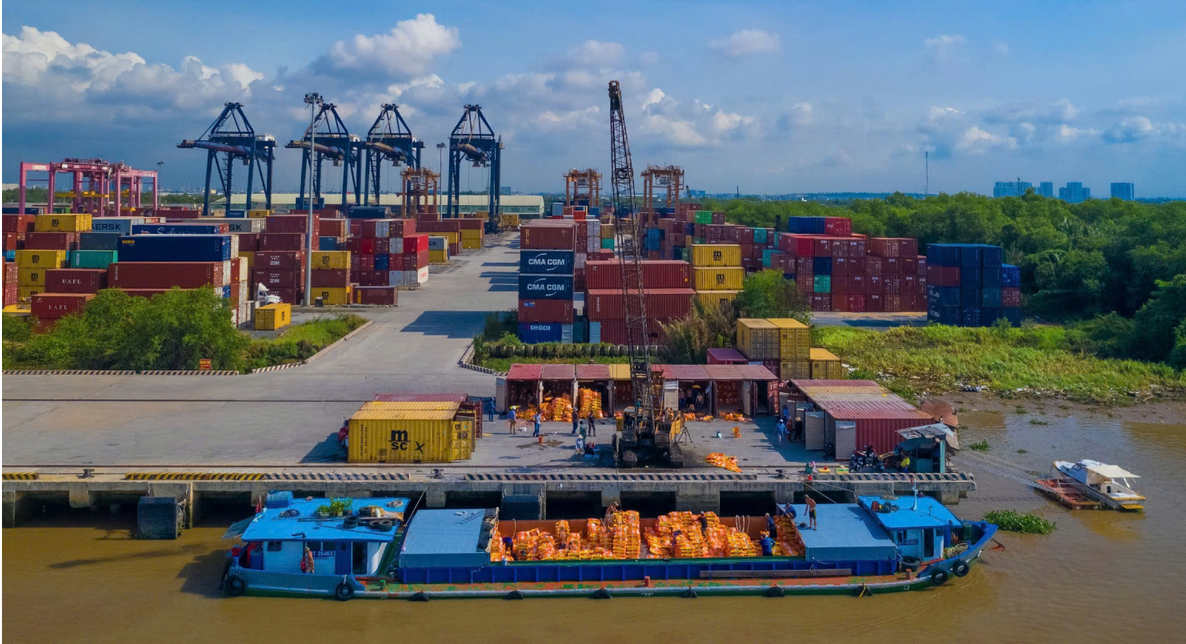
20/10/2021
On October 19, Deputy Prime Minister Le Van Thanh signed Decision No. 1769/QD-TTg approving the railway network master plan for the period 2021-2030, with a vision to 2050. Accordingly, by 2030, 9 new railway lines, total length of 2,362 km will be completed.
The 2030 goal is to renovate and upgrade existing railway lines
The decision stated that the goal by 2030 is to renovate and upgrade to effectively exploit the existing railway lines, smoothly connecting the international railway; complete the investment preparation, arrange resources to start a number of new railway lines. In particular, priority is given to the North-South high-speed railway, routes connecting international gateway seaports, international airports and railway hubs in big cities Ho Chi Minh City - Can Tho, with some specific goals as follows:
In terms of transportation, the volume of cargo transport reaches 11.8 million tons, accounting for a market share of about 0.27%; passenger transport volume reaches 460 million passengers, accounting for a market share of about 4.40%.
In terms of infrastructure: Upgrading and renovating to ensure safe operation of 7 existing railway lines; invest in two priority sections of the North - South high-speed railway line (Hanoi - Vinh, Nha Trang - Ho Chi Minh City); give priority to construction of a number of railway lines connecting international gateway seaports, especially in the area of Hai Phong and Ba Ria - Vung Tau; connecting Ho Chi Minh City with Can Tho, connecting internationally with China, Laos and Cambodia in accordance with international transport agreements and in sync with the investment progress of countries in the region.
The 2050 vision is to complete the North - South high-speed railway line; continue to invest in completing new railway lines in the focal area of Hanoi, the focal point of Ho Chi Minh City. In Ho Chi Minh City, railways connect seaports, industrial parks, economic zones, Central Highlands provinces, coastal railways, international railways. Existing railway lines will be maintained, renovated and upgraded to meet the needs of passenger and freight transport.
According to the Decision, in addition to 7 existing railway lines with a total length of about 2,440 km, the 2030 national railway network will plan 9 new railway lines with a total length of 2,362 km, including:
- The North-South high-speed railway line from Ngoc Hoi station to Thu Thiem station, about 1,545 km route-kilometres.
- Yen Vien - Pha Lai - Ha Long - Cai Lan route from Yen Vien Bac station to Cai Lan station, 129 route-kilometres.
- The ring route in the east of Hanoi city from Ngoc Hoi - Lac Dao - Bac Hong, about 59 route-kilometres; converting Ngoc Hoi - Yen Vien, Gia Lam - Lac Dao sections into urban railways in accordance with the construction route of urban railway No. 1 in Hanoi and the Eastern ring railway.
- The Hanoi - Hai Phong route (belonging to the Lao Cai - Hanoi - Hai Phong railway line) parallels the Hanoi - Hai Phong expressway (to Hai Phong South station) connecting the Hai Phong international gateway seaport with ports Dinh Vu, Nam Do Son and Lach Huyen, about 102 route-kilometres.
- The Vung Ang - Tan Ap - Mu Gia route from Vung Ang port to the Vietnam - Laos border (Mu Gia pass), is about 103 route-kilometres.
- Bien Hoa - Vung Tau route from Trang Bom station to Vung Tau station, about 84 route-kilometres.
- Ho Chi Minh City - Can Tho route from An Binh station to Cai Rang station, about 174 route-kilometres.
- The Ho Chi Minh City - Loc Ninh route from Di An station to the Vietnam - Cambodia border rail connection point (Hoa Lu border gate), is about 128 route-kilometres.
- The Thu Thiem - Long Thanh route from Thu Thiem station to Long Thanh International Airport station only serves passengers, about 38 route-kilometres.
The 2050 national railway network is planned to include 25 lines with a length of 6,354 km. Total capital demand by 2030 is about VND 240,000 billion, using state budget capital, non-budget capital and other legal capital sources.
Reducing costs to promote logistics development
According to an analysis of experts, road transport accounts for over 70% of the freight transport market share and is considered the result in high logistics costs. Currently, Vietnam's logistics costs are quite high compared to some countries in the region, accounting for about 20.9% of GDP. This is a major bottleneck affecting the cost of goods, the cost of the value chain of goods and the competitiveness of Vietnamese goods.
Therefore, in order to reduce logistics costs, the cost of road transport must first be reduced. According to a representative of the Department of Transportation - the Ministry of Transport, in order to reduce road transport costs and contribute to reducing logistics costs, in the coming time, it is necessary to use capital sources effectively, gradually socialize investment calls to form a national highway network, special-use roads to ensure effective connection of industrial parks, key economic centers, main border gates, important traffic hubs with seaports and inland waterway ports and railway station. In which, it is important to build a multimodal transport corridor, combined different modes of transport to reduce transportation costs; prioritize the construction of a number of key transport corridors, connecting seaports with economic zones, thereby offering the most optimal mode of transport for the lowest cost.
Therefore, with the above policy of expanding the railway network, seaports, industrial parks, key economic centers, etc. will be closely connected, ensuring a stable circulation of goods and contribute to cutting current logistics costs. At the same time, businesses could reduce the burden of production and transportation costs, contributing to the recovery and boost the domestic and international economy. Especially, cargo transportation options will be created, forming a solid foundation for the domestic supply chain amid the current epidemic situation.
U&I Logistics

30/12/2025